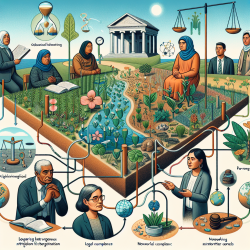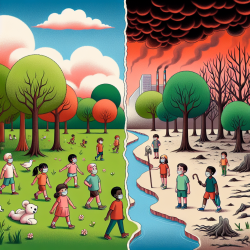Introduction
In the ever-evolving landscape of special education, practitioners are constantly seeking innovative strategies to enhance their skills and improve student outcomes. Recent research on unicellular diazotroph populations, specifically focusing on heterogeneous nitrogen fixation rates, offers intriguing insights that can be applied to the field of education. This blog explores how these findings can inspire special education practitioners to adopt new approaches and encourages further research in this area.
Understanding the Research
The study titled "Heterogeneous nitrogen fixation rates confer energetic advantage and expanded ecological niche of unicellular diazotroph populations" investigates the metabolic specialization in unicellular diazotrophs, such as Crocosphaera watsonii and Cyanothece sp. The research reveals that within clonal populations, nitrogen fixation is confined to a subpopulation, reducing the energetic cost of respiration and expanding the ecological niche. This specialization allows these organisms to thrive in environments with low light but high nutrient availability, offering an energetic advantage.
Implications for Special Education
While the research focuses on marine microorganisms, the concept of heterogeneous specialization can be translated into special education practices. Here are some ways practitioners can leverage these insights:
- Customized Learning Plans: Just as diazotrophs exhibit varied nitrogen fixation rates, students have diverse learning needs. Special education practitioners can develop individualized education plans (IEPs) that cater to each student's unique strengths and challenges, optimizing their learning experiences.
- Resource Allocation: By understanding the varying needs of students, educators can allocate resources more efficiently. This approach mirrors the energy-saving strategies of diazotrophs, ensuring that resources are directed where they are most needed.
- Collaborative Learning Environments: Encouraging collaboration among students with different abilities can create a dynamic learning environment. Just as diazotrophs benefit from metabolic specialization, students can learn from each other's strengths, fostering a supportive community.
Encouraging Further Research
The findings from this research open up new avenues for exploration in special education. Practitioners are encouraged to delve deeper into the concept of heterogeneous specialization and its potential applications. By conducting further research, educators can uncover innovative strategies to enhance student learning and well-being.
Conclusion
The study on heterogeneous nitrogen fixation rates in unicellular diazotrophs offers valuable insights that can inspire special education practitioners to adopt new approaches. By embracing the concept of specialization and collaboration, educators can create more inclusive and effective learning environments. To read the original research paper, please follow this link: Heterogeneous nitrogen fixation rates confer energetic advantage and expanded ecological niche of unicellular diazotroph populations.










